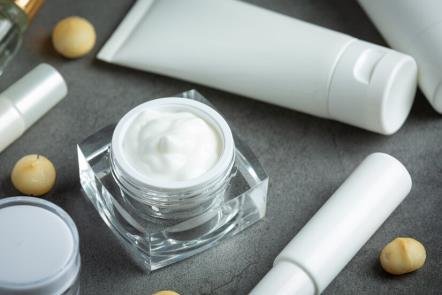Silver Nitrate and Chlorhexidine Gluconate Cream

Silver nitrate and chlorhexidine gluconate stand out as potent antimicrobial agents. Various forms, including creams, are available to combat microbial colonization in wounds and prevent infection Silver Nitrate and Chlorhexidine Gluconate Cream.
Silver Nitrate: An Old Ally with Modern Applications
Silver nitrate, a compound with a long history of medical use dating back to the Middle Ages, continues to be relevant in modern medicine due to its broad-spectrum antimicrobial properties. It is effective against a wide range of microorganisms, including bacteria, fungi, and some viruses. Silver nitrate’s efficacy primarily stems from its capacity to disrupt microbial DNA and cellular proteins, thereby causing cell death.
Mechanism of Action
Silver ions released from silver nitrate interact with bacterial cell membranes, causing structural changes that increase membrane permeability and lead to cell lysis. Additionally, silver ions can enter bacterial cells, where they bind to DNA and halt cell division, effectively killing the microorganism.
Clinical Applications
Clinical settings commonly use silver nitrate in wound care due to its cauterizing properties and ability to treat infected wounds. People frequently apply it to chronic ulcers, burn wounds, and infection-prone areas. Its role in reducing wound bioburden and promoting a sterile environment makes it a valuable tool in the arsenal against wound infections.
Chlorhexidine Gluconate: A Versatile Antiseptic
Chlorhexidine gluconate is another widely used antimicrobial agent known for its efficacy in skin and wound cleansers. As a biguanide antiseptic, it offers both bactericidal and bacteriostatic effects against a variety of pathogens, making it a staple in both healthcare and community settings Silver Nitrate and Chlorhexidine Gluconate Cream.
Mechanism of Action
Chlorhexidine gluconate functions primarily through this mechanism. By binding to the bacterial cell wall, it alters the osmotic equilibrium, causing the cell contents to leak out, which ultimately leads to cell death. It also precipitates and coagulates cytoplasmic proteins, further inhibiting bacterial growth.
Clinical Applications
People widely use chlorhexidine for skin disinfection before surgical procedures, wound cleaning, and personal hygiene products. Its ability to adhere to skin and mucous membranes allows for prolonged antimicrobial activity, which is crucial in both preventing and controlling infections.
Combined Benefits in Cream Form
Putting silver nitrate and chlorhexidine gluconate together in cream form makes the best of both substances, creating a strong barrier against germs. This combination is particularly beneficial in treating wounds at high risk of infection or those already infected Silver Nitrate and Chlorhexidine Gluconate Cream.
Enhanced antimicrobial spectrum
When silver nitrate and chlorhexidine gluconate work together, they make the antimicrobial spectrum bigger, protecting against more types of pathogens. This is particularly important in environments where the risk of infection is high, such as hospitals and clinics.
Applications in Wound Care
The cream is ideal for application on wounds where moisture control is necessary but infection risk is significant. It is especially useful in treating burns, ulcers, and surgical sites. The cream form allows for easy application and sustained release of the active ingredients, maintaining effective concentrations at the wound site for extended periods of time Silver Nitrate and Chlorhexidine Gluconate Cream.
Safety and Considerations
While the combination cream is generally safe for use, it is important to consider potential side effects. Silver nitrate can cause argyria, a condition characterized by bluish-grey discoloration of the skin, if used excessively. Chlorhexidine gluconate, meanwhile, can cause skin irritation or allergic reactions in some individuals. Therefore, it is essential for healthcare providers to evaluate the suitability of this treatment on a per-patient basis and monitor for adverse effects.
Conclusion
Silver nitrate and chlorhexidine gluconate cream represent a significant advancement in topical antimicrobial therapy. The strong antimicrobial properties of silver nitrate and the long-lasting barrier protection of chlorhexidine gluconate work together in this cream to treat and stop wound infections. Its role in modern wound care underscores the importance of innovative approaches in medical treatments, paving the way for more effective and efficient healing processes Silver Nitrate and Chlorhexidine Gluconate Cream.





